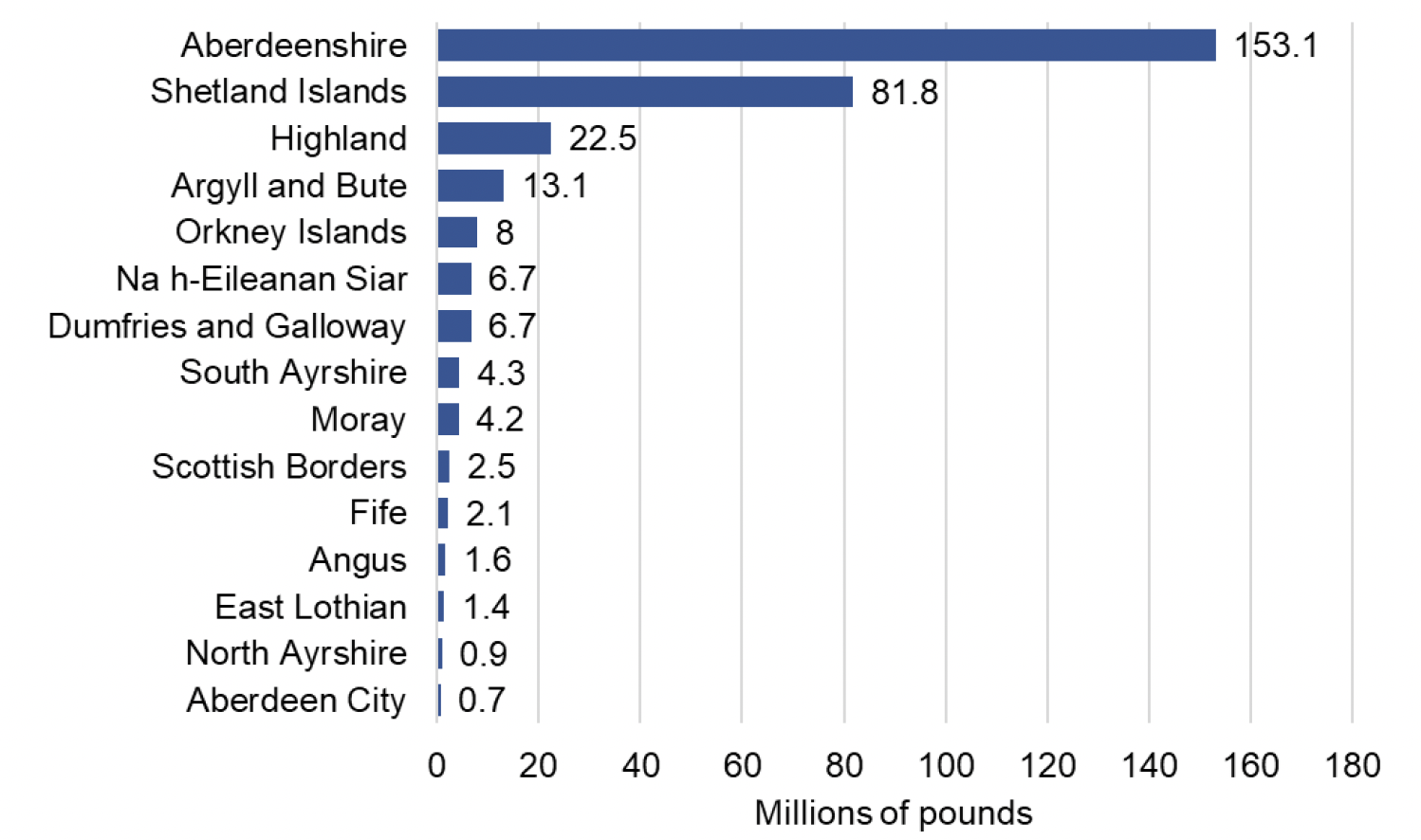Scotland's Marine Economic Statistics 2021
Statistics on the economic contributions of Scotland’s marine sectors in 2021. Includes a time series of Gross Value Added (GVA), turnover and employment for marine sectors. The supporting documents include: additional tables in an excel file and a pdf version of the publication
Fishing
This fishing section covers commercial sea fishing only. Fishing is important to Scotland's rural and coastal economies. It feeds into Scotland's food and drink economy and provides rural employment. Fishing economic data comes from the Seafish survey. Employment comes from Scottish Sea Fisheries Statistics. These sources are more complete than the Scottish Annual Business Statistics. See Data and Methodology for more information.
In 2021, fishing generated £321 million GVA, 0.21% of the Scottish economy and 7% of the marine economy GVA. Fishing employed 4,241 people, 0.16% of Scottish employment and 6% of marine economy employment.
From 2020 to 2021, the GVA from fishing (adjusted to 2021 prices) increased by 10%. The longer term trend from 2012 to 2021, showed that fishing GVA increased by 27%. From 2012 to 2021, employment fell by 6%.
Fishing GVA depends on the price and weight of fish landed. Between 2020 and 2021, both the weight and value of fish landed increased, but the value has not returned to pre-pandemic levels. More information on fish landings is in the Scottish Sea Fisheries Statistics publication.
Aberdeenshire had the highest fishing GVA at £153 million in 2021 (Figure 3) This is 48% of all fishing GVA. Aberdeenshire includes Peterhead, the largest UK fishing port.
Figure 3. Aberdeenshire had the highest fishing GVA at £153 million, followed by Shetland Islands at £82 million.
Fishing GVA by local authority, 2021

Contact
There is a problem
Thanks for your feedback